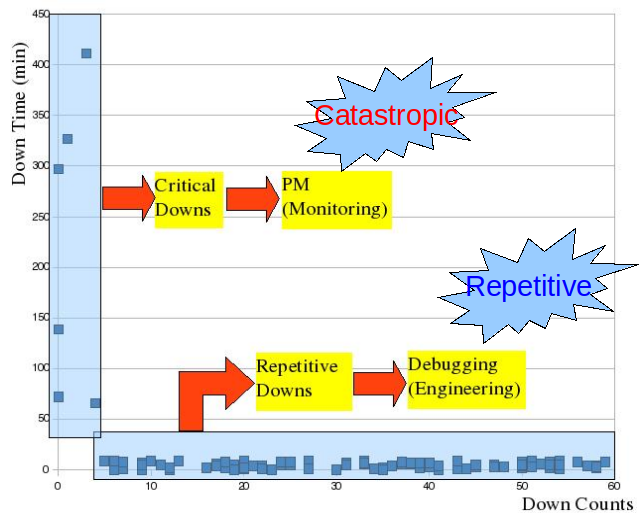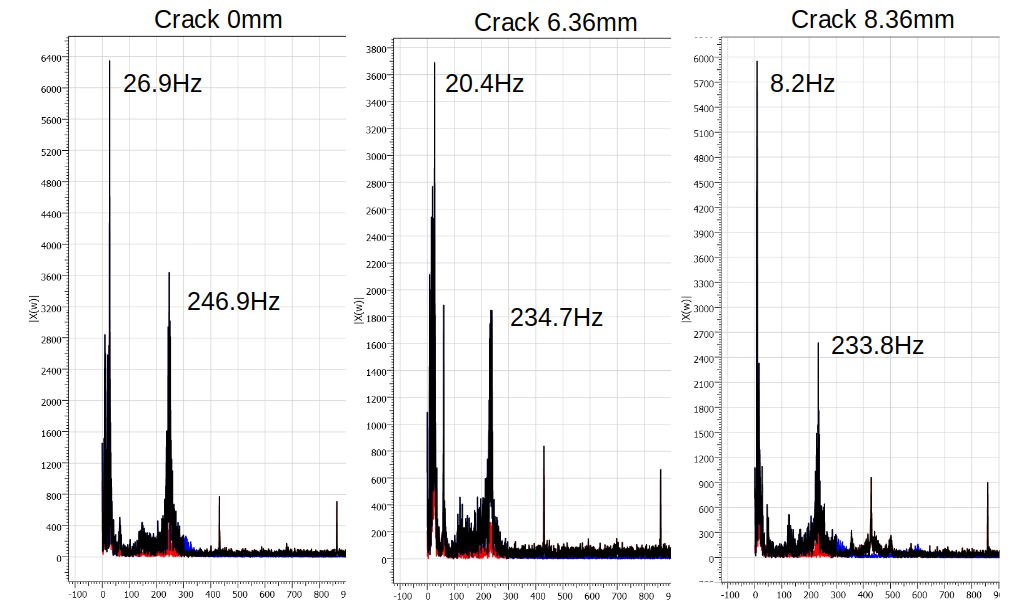STK, used in semiconductor/LCD lines or logistics factories, is a key equipment for logistics. In the event of a failure, the entire line is stopped and there are many problems such as production disruptions, inventory defects, restart costs after shutdown, and customer delivery problems.
Characteristics of logistics equipment down
Monitoring STK faults in LCD factories is divided into two types of faults.
The first is a repetitive down, and its failure time is short, and it is repeated. This type of down is often caused by equipment instability, and it is easy to fix by operator actions, so there is no significant production disruption. Because the production disruption is small, the improvement is slow due to the hidden factory effect, and the failure is often chronic.
The second is catastrophic down, which does not occur much, but it is fatal due to the long downtime. This is a case where a major machine of a facility breaks down. This is a case where problems that cannot be found during PM (preventive maintenance) usually accumulate and burst at once. After the breakdown, everything is normalized, but the damage caused by unexpected failures is too great.
The following figure shows the history of STK failures in actual LCD factories.

Introduction to D-SAT
In order to prevent disaster down, we have developed and supplied D-SAT products for logistics equipment monitoring. D-SAT has the same form as the load of logistics equipment and is equipped with a battery that supports automatic charging, And it is equipped with a high-performance DSP that can store and analyze sensor data that can monitor the status of logistics equipment. It includes a wireless communication module that can monitor the status of logistics equipment and report it to the outside.
D-SAT diagnostic method
D-SAT diagnoses the status of logistics equipment with various sensors and various algorithms.
The following is an example of an experiment when a crack occurs in a mechanical arm. Compared to the data on the left where no cracks have occurred, the data on the middle and right where the crack has progressed to some extent has a markedly different characteristic. In this way, the occurrence of cracks can be detected in advance and delivered to the facility manager to induce appropriate PMs so that actions can be taken before disaster strikes.

Components of D-SAT
- Load frame dedicated to logistics equipment
- Various sensors
- DSP analysis module
- External wireless (Wifi) communication module
Installation and operation
If a customer selects a logistics facility to request analysis (load-compatible, all equipment connected to a logistics company) and requests it, a dedicated D-SAT is designed and supplied. After converting some shelves for D-SAT charging, logistics logic must be modified to periodically move the D-SAT to the corresponding shelf in the logistics system to charge for a certain period of time, and issue a move command to pass the D-SAT through each logistics equipment. On the monitoring PC, the monitoring person receives the data extracted from the D-SAT, stores it, and checks the health status of the logistics facility.
